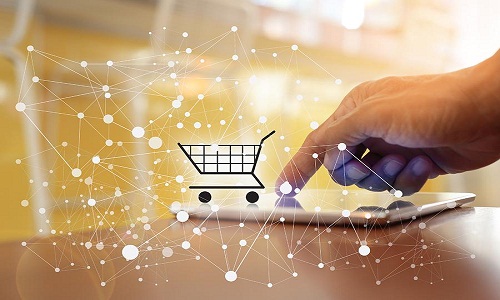"Until recently, many online brands considered brick and mortar stores passé. Companies like Warby Parker, Bonobos and Casper relied more on their well-designed website to capture the market. However, growing competition, surging online advertising costs and cheap mall space are prompting these digital natives to again embrace offline stores. Infact, 90 cents of every retail dollar in the US is spent on a physical location."
 Until recently, many online brands considered brick and mortar stores passé. Companies like Warby Parker, Bonobos and Casper relied more on their well-designed website to capture the market. However, growing competition, surging online advertising costs and cheap mall space are prompting these digital natives to again embrace offline stores. Infact, 90 cents of every retail dollar in the US is spent on a physical location.
Until recently, many online brands considered brick and mortar stores passé. Companies like Warby Parker, Bonobos and Casper relied more on their well-designed website to capture the market. However, growing competition, surging online advertising costs and cheap mall space are prompting these digital natives to again embrace offline stores. Infact, 90 cents of every retail dollar in the US is spent on a physical location.
This “clicks-to-bricks” phenomenon encompasses big names like Amazon Books and Casper as well as less-known startups such as men’s shorts purveyor Chubbies and hair color brand Madison Reed.
Physical presence boosts growth
Physical presence is necessary for a brand’s long-term growth. Retail startups now include a store opening plan in pitches to venture firms. Bonobos, acquired last year by Walmart, recently opened in Lexington, Kentucky, and will soon have stores in over 60 locations. Buying ads on Google, Facebook and Instagram once made a lot of sense as it allowed nascent brands to narrowly target shoppers and grow fast. Now social feeds are jammed with posts from obscure brands. The competition to grab attention has pushed up the cost of ads even as they become less effective with so many of clamoring for attention.
With millions of square feet of space available across the country, opening a physical store has become cheaper. Landlords are offering leases as short as a year with extension options. That flexibility extends to temporary locations, too, with spaces dedicated to rotating pop-ups so tenants can easily test concepts. To further reduce risk, they’re offering to help pay for store remodeling and taking a small percentage of sales instead of monthly rent.
offering leases as short as a year with extension options. That flexibility extends to temporary locations, too, with spaces dedicated to rotating pop-ups so tenants can easily test concepts. To further reduce risk, they’re offering to help pay for store remodeling and taking a small percentage of sales instead of monthly rent.
A physical store offers instant gratification, merchandising, employee service and dressing rooms to get shoppers to buy more and return fewer items. Alexa Buckley, co-founder women’s shoe purveyor Margaux, outlines the merits of having a store when she rented a loft space in Philadelphia. Despite heavy rains and wind from the remnants of a hurricane, 200 women showed up and generated almost a month’s worth of sales. In July, Margaux opened a permanent store in Manhattan’s Greenwich Village. She’s planning more.
Offline boost profit margins
Profit margins in physical stores are better, too, without the brands needing to pay for shipping or as many returns. Plus, offline customers tend to buy more, and after the store’s debut there is a noticeable lift in the surrounding area’s online sales. On the heels of that brick-and-mortar success, Kleiner Perkins Caufield & Byers, an early Amazon backer, invested $30 million in UntuckIt so it could open more stores.
Bonobos’s “guide shops” are set up for customers to try on and order clothes. The brand focuses not on sales-per-square-foot — a traditional industry metric — on how much the stores drive sales online and off in a particular market.
Digital natives are absorbing many of the lessons honed by retailers for the past century: that people like to feel the fabric, try on glasses, get face-to-face shopping tips. The question is whether Bonobos, Warby Parker and the rest have also learned the painful lessons — how over-expanding can cannibalise existing stores — that laid low so many specialty retailers in recent years.












